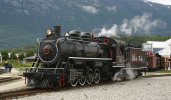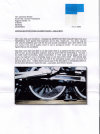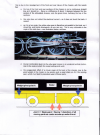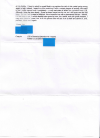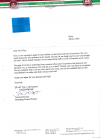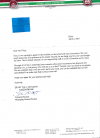I'm not sure everyone appreciates what a rare bird this is, it's not an "LGB Mikado", but the Aster/LGB Mikado, brass body by Aster, limited run
Yup, LGB provided the 8-coupled chassis to Aster in Japan, who had already made the little Ruegen 0-6-0 Frank+S in live steam. The initial failure of just about every single one of these beautiful models was a real reality check to Aster, who did not go on to make any more models with all-LGB drive trains
I wrote this back in 2009 on Mylargescale - Greg probably remembers it.....
Anything that Aster built in its entirety seems to have worked just fine - the NYC Hudson and the Shays - and the NSW AD60 Garratt, of course.
It was when they were obliged to use an electric drive-train that was not only fitted with out-of-scale wheels, but feeble beyond belief, in spite of its august LGB ancestry, that things went tits-up.
The WP mike was an opportunity for LGB to build a much-needed model that nobody else had the cojones to build - a REAL 1/22.5 mike to scale dimensions in just about every respect - do a search on my posts from a few years ago where I measured the real thing against the model. Such a model really needed, from the off, to be built by a master model builder, and LGB had worked successfully with both Aster and Magnus before, but it was to Aster that they eventually returned. This opportunity had only come about because all of a sudden, LGB had an eight-coupled drive-train that satisfied the need to bend in the middle - the one they developed for their plastic 1/27th scale 'mainline mikes, US and French.
Sadly, the LGB engineers had not done their homework, and the drive-train, more than adequate for hauling a plastic body-shell around, failed dismally and almost instantaneously when installed in a 4.5 kilogram all-metal body. I had THREE before I got one that lasted more than literally half a minute, and that recently died on me in the middle of a show, causing a LOT of embarrassment and necessitating a lot of help from my favourite cousin, Jerry McColgan, in trouble-shooting it and getting it back together.
Without naming any names, but Zubi knows who I mean, Aster were mortified and embarrassed beyond measure that their name was associated with this expensive disaster that bore their name.
Let's just look at a few good points about this model -
1. Apart from the drivers, which were a scale 52" diameter instead of the prototype's 48", it was about as near as darnit all to 1/22.5 scale.
2. Because of the above scale, it worked well with LGB's passenger cars, although not so much with the hugely distorted caboose [also sold in red or blue as 'radio car' version].
3. As with the plastic Mikes, it went around R1 curves, for those kiddy-winkies who ran them around their playroom furniture and whose mommy and daddy could afford the $4000 hanger tag. It did, however, look ludicrous whilst doing so.
And now the bad points -
1. At 1/22.5, the gauge-to-scale ratio was wrong - 45mm gauge track in 1/22.5 is metre gauge, not the three-foot of the White Pass.
2. The-then popular and burgeoning scale of Fn3 - or 1/20.3 scale - was coming of age, with Bachmann and Accucraft beginning to produce some wondrous models in both electric and, in the case of Accucraft, live-steam., LGB totally missed this market with their undersized model.
3. The panning suffered by LGB at the awful record of this high-priced model destroyed the relationship between them and Aster Hobbies for ever. Aster felt that they had been tainted by the association, and the cooperation ended right there. When I lived and worked in Tokyo in the early noughties, the bunch of live steamers that pal Zubi and I belonged to naturally had a couple of members from Aster, just down the road from our usual meeting-place in Yokohama. Let's just say that after mentioning it once, the words 'embarrassing fiasco' were heard a couple of times, and then, no more.
As an aside, Accucraft went of to produce a beautiful live-steam model of the EBT's #12, as well as a range of passenger cars that might have looked good behind a correct-for-gauge model of #73. Sadly, Accucraft failed to ride the wave of the the worldwide fame of the White Pass railway - with almost a million passengers a year, pre-Flu, probably THE most popular NG line on earth, with a host of fans worldwide, and never produced a correct scale #73. I opine that they would have sold like ice-creams at Coney Island in July 4th - I certainly would have gone into debt for one.
BTW, Magnus made a beautiful but extremely fragile 1/22.5 K27 for LGB - again, loony prices apply. As for the LGB/Aster loco, one well-known dealer here in UK is looking for around £3000 for one.
This gentleman has a very interesting web-site set up solely for LGB products and the fixing-up thereof -
LGB Mikado
